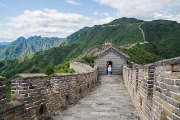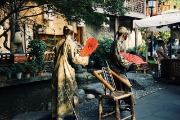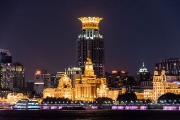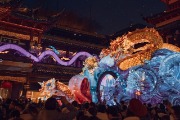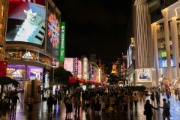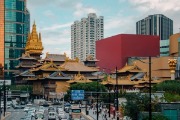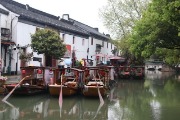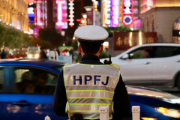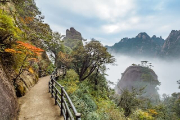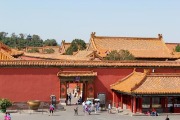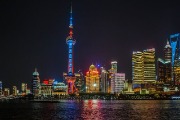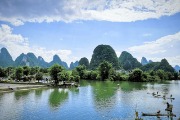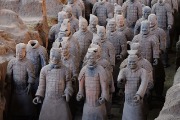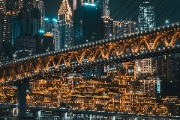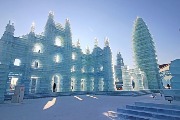Shanghai Zhujiajiao Town
It’s the most popular traditional Chinese-style ancient town in Shanghai.
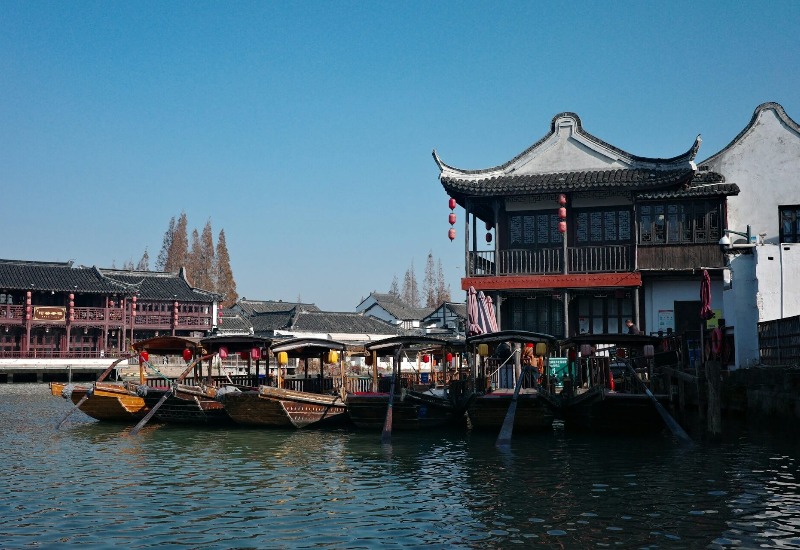
Location: Qingpu District, Shanghai, China
Type: One of Shanghai’s Four Ancient Towns, a popular historical town in China
Shanghai has four famous historical water towns, and Zhujiajiao Water Town is one of them. It’s also the only Shanghai town on the list of top 10 most popular ancient towns for international tourists, published by the China Tourism Academy.
Shanghai Zhujiajiao Town is over 1,700 years old, and the whole town feels like an Eastern Venice. There are rivers everywhere, with dozens of ancient stone bridges. You can hop on a traditional Chinese hand-pulled boat, enjoy the breeze, and cruise under one stone bridge after another. Along the way, you’ll see beautiful ancient Chinese architecture lining the banks.
You can also stroll along the cobbled streets, check out local handicrafts, or try some delicious street food. Or, just step into a teahouse, sip tea, and take in the stunning view of the whole town. The vibe is incredibly peaceful, almost like time stands still. All you see are the old buildings, trees, and people relaxing on boats. The air feels so fresh, and everything slows down.
Next, we’ll take you through the main attractions of Zhujiajiao Town (though the town is large and we can only show you a portion). We’ll also introduce the other three ancient towns in Shanghai. At the end, you’ll find a Q&A section and ticket info about Zhujiajiao, China.
Table of Contents
Main Attractions in Shanghai Zhujiajiao Town
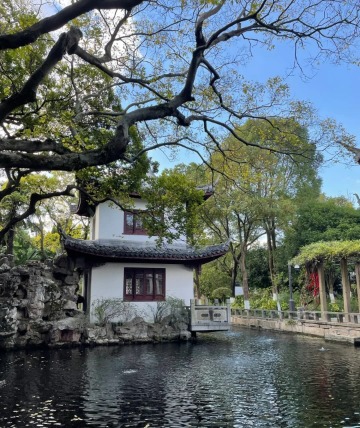

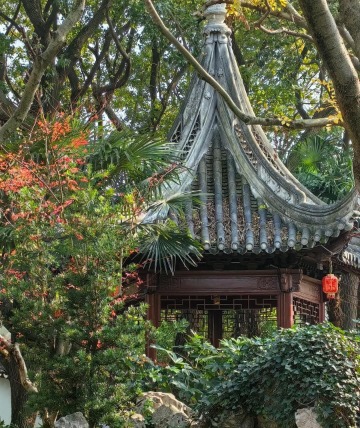
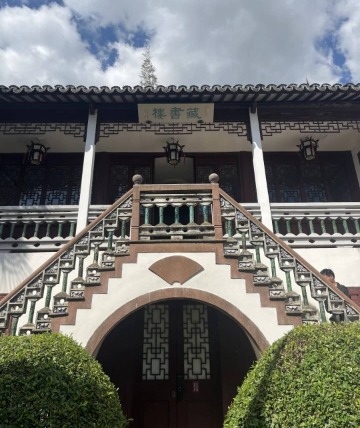
Kezhi Garden (课植园)
The first stop in Zhujiajiao Water Town is Kezhi Garden, the largest garden in town. The owner, Ma Wenqing, was a wealthy businessman during the Republic of China era. He spent 300,000 taels of silver (about 5 to 8.5 million USD today) and 15 years to build this traditional Chinese garden. It blends architectural styles from the Ming and Qing dynasties, with incredible craftsmanship. Here, you can admire intricate wooden window carvings, lifelike stone sculptures, and ancient calligraphy and paintings on stone tablets. You can also wander along winding stone paths to explore maze-like rockeries or snap a beautiful photo by the koi pond.
Tickets are 20 CNY per person (about 3 USD), no reservation needed—just buy your ticket on-site and head in!
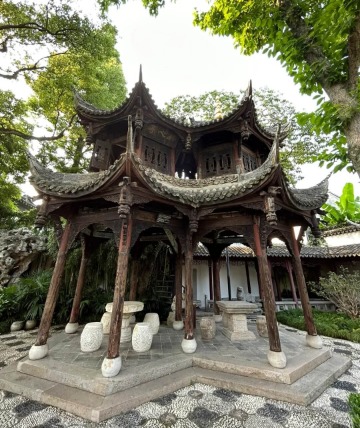
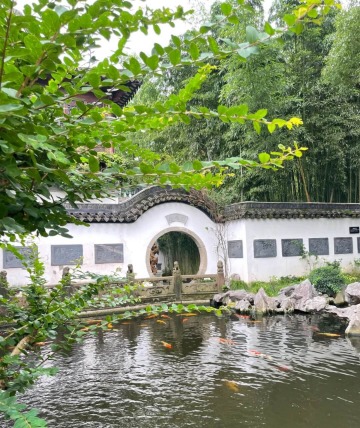
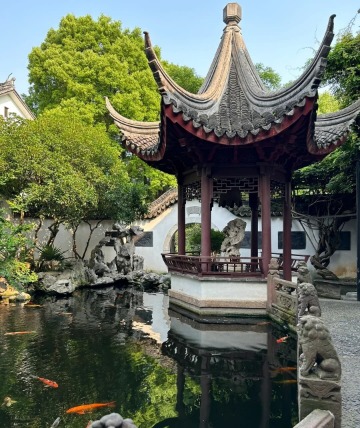
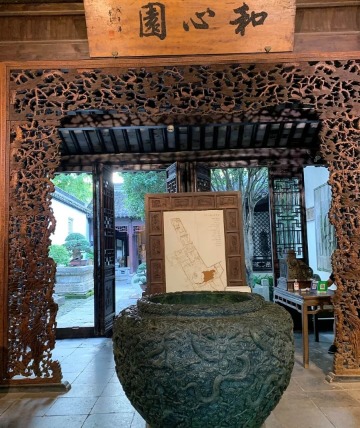
Hexin Garden (和心园)
After visiting Kezhi Garden, the next stop is another popular garden in Zhujiajiao Water Town, Hexin Garden. Though it looks very traditional, this garden was actually built in 2007. It was funded by Zhao Guoliang, a Chinese-American, and is a private museum featuring Chinese garden style. Once inside, you’ll be impressed by its beautiful design and the wide collection of ancient Chinese artifacts. These include Ming and Qing dynasty wood carvings, porcelain, jade, bronze items, and more—each piece worth a fortune. They not only showcase the craftsmanship of ancient Chinese artisans but also reflect the cultural atmosphere of the time.
Tickets are 50 CNY per person (about 7 to 8 USD), and the garden is open daily from 9:00 AM to 5:00 PM. Tickets can be purchased on-site.
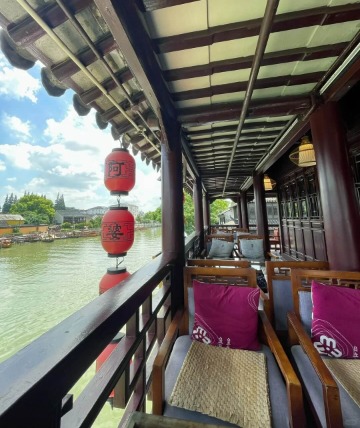
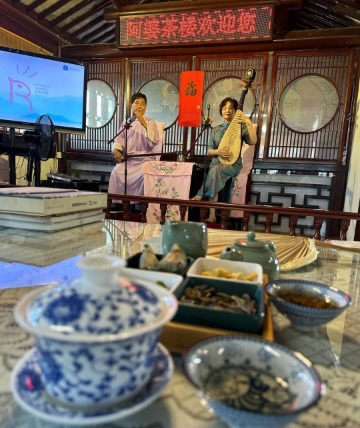
A-Po Teahouse (阿婆茶楼)
After exploring the two most popular gardens in Shanghai Zhujiajiao Town, your next stop could be the second floor of A-Po Teahouse, where you can sip tea and enjoy a panoramic view of the town. This teahouse is over a hundred years old, built in the style of the Qing Dynasty. They offer a set combo called “one tea, four snacks,” which includes green tea, zongzi (sticky rice dumplings), sunflower seeds, peas, and pickled vegetables. Every afternoon from 2:00 to 4:00 PM, the teahouse holds four performances of Pingtan, a traditional Jiangnan storytelling and music performance, each lasting 20 minutes with a 10-minute break in between. This performance is a local favorite and deeply cherished by the people.
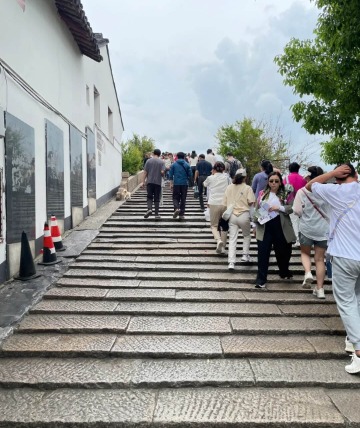
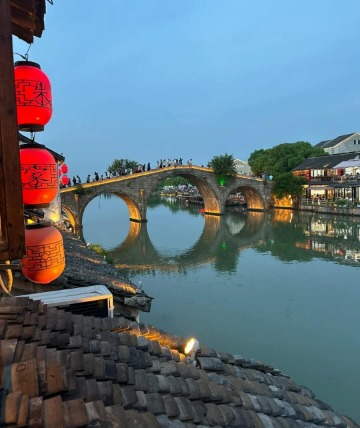
Fangsheng Bridge (放生桥)
After enjoying your tea, head over to Fangsheng Bridge, the most famous bridge in Zhujiajiao Water Town, also known as “Shanghai’s First Ancient Bridge.” The name “Fangsheng” means releasing animals that have been captured or are about to be slaughtered back into nature. It’s a Buddhist virtue and often part of daily life and religious rituals. This explains the bridge’s connection to Buddhism. Fishing is prohibited under the bridge, and every first day of the lunar month, local monks hold a release ceremony there.
The best time to visit Fangsheng Bridge is at sunset, when the sky turns golden. You can wear traditional Chinese clothing and take photos on the bridge, capturing the unique charm of the place. Besides its stunning beauty, visitors love the bridge for its positive symbolism. There’s a local saying in Zhujiajiao Ancient Town: “Walk over Fangsheng Bridge, and you’ll live to be 99.” It’s believed that crossing the bridge brings good luck and long life!
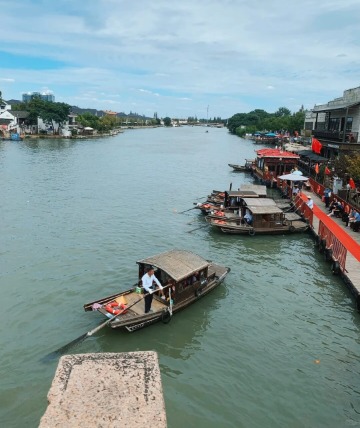

Fangsheng Bridge Wharf (放生桥码头)
Under the bridge, you’ll find a hand-rowed boat wharf where you can take a boat tour of the town and experience the slow pace of life. Just a heads up, though—during Chinese holidays, the wharf gets really crowded, and it can be tough to get a ticket for the boat ride.

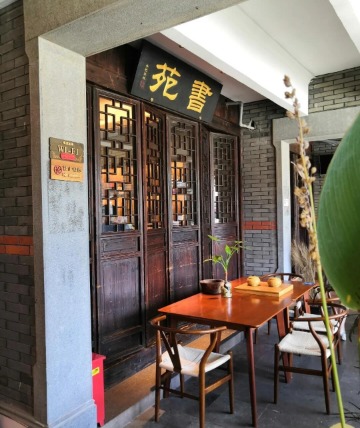
Jiangnan First Teahouse (江南第一茶楼)
After crossing Fangsheng Bridge, you’ll arrive at another famous teahouse in Shanghai Zhujiajiao Town, Jiangnan First Teahouse. Built in the late Qing Dynasty, this teahouse is over 100 years old. Inside, the decor is traditional and elegant, with bright and spacious interiors that bring back memories of old Shanghai tea houses.
Like A-Po Teahouse, Jiangnan First Teahouse also has a Pingtan stage. Every Saturday afternoon, they invite Pingtan masters from Suzhou to perform, drawing many local fans of this art form. The teahouse also offers a unique “hand-rowed boat breakfast tea” experience, where you can sip tea and enjoy breakfast on a boat, immersing yourself in the charm of the Jiangnan water towns.
Many visitors rave about the experience at Jiangnan First Teahouse. Not only is the environment beautiful, but the service is excellent, and the prices are affordable. The fruits and snacks served are fresh and of high quality.
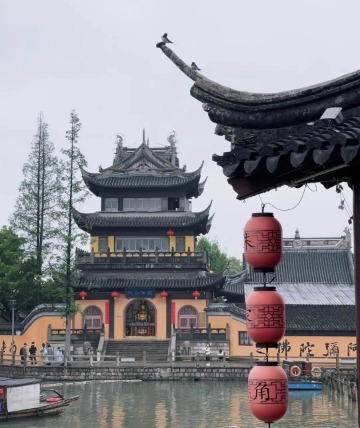
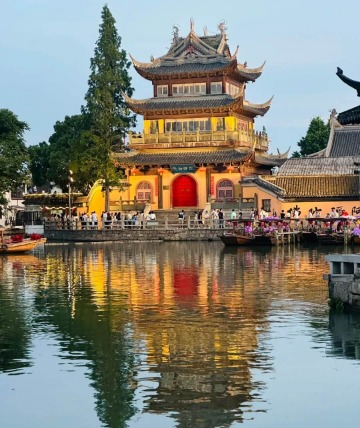
Yuanjin Zen Temple (圆津禅院)
Keep walking and you’ll spot a yellow-walled building by the water, with the Chinese characters “南无阿弥陀佛” (Namo Amituofo) on the wall. This is the landmark of Zhujiajiao Water Village, Yuanjin Zen Temple. Originally built in 1341 and rebuilt in 1573, it’s a pilgrimage site for Buddhist followers. The temple is home to many valuable murals and sculptures.
During Chinese New Year (Spring Festival), the temple holds a prayer event, attracting lots of visitors who come to pray for a safe and prosperous year ahead.
Aside from the prayers, you can also try a bowl of vegetarian noodles or a cup of temple coffee here—quite a unique experience!
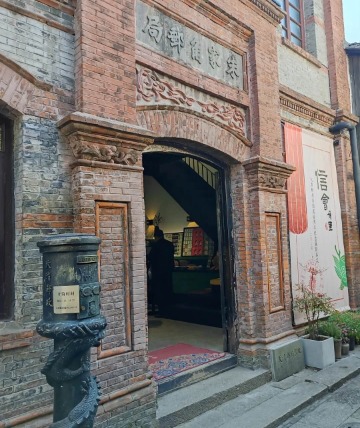
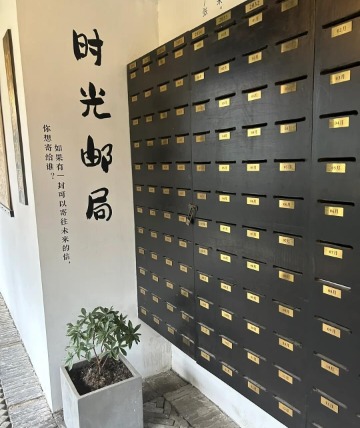
Da Qing Post Office (大清邮局)
After visiting the temple, your next stop is the Da Qing Post Office, built in 1903. It’s the only post office in eastern China that has been in operation since the Qing Dynasty, and it still serves its purpose today with regular mail collection. The first floor of the post office is a creative market, where you can pick up all kinds of Zhujiajiao-themed souvenirs, like fridge magnets, postcards, badges, and canvas bags. They all have a charming, vintage style, making them perfect keepsakes. The second floor is a small exhibition hall where you can try stamp collecting or send a letter.
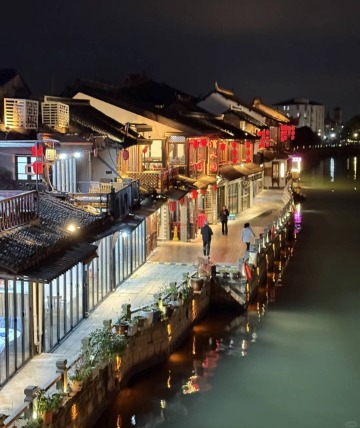
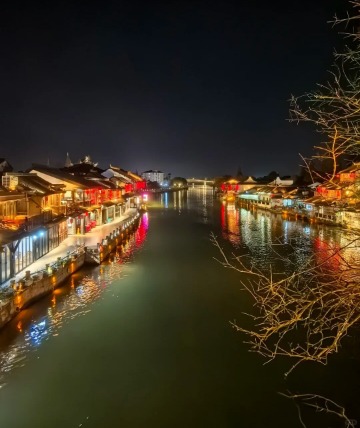
Night Scene (夜景)
If you’re not in a hurry to leave, you can also experience the charming night view of the ancient town. At night, Zhujiajiao Water Town is quieter and more peaceful, offering a unique sense of relaxation. The ancient buildings, lit up under the soft glow of lights, look especially elegant and timeless. The streets are filled with the tempting aromas of local street food. Many shops are still open, warmly welcoming visitors from all over with fresh river delicacies and authentic Shanghai dishes. You can try local treats like A-Po zongzi, hawthorn cakes, paper-wrapped dumplings, and stir-fried silver fish with eggs, soaking in the lively atmosphere of the town.
Ways to Explore Zhujiajiao Water Town
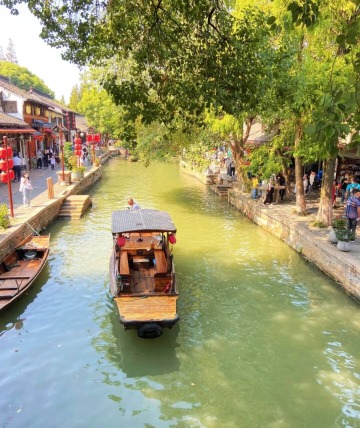
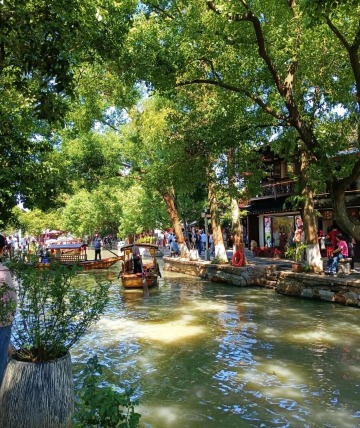
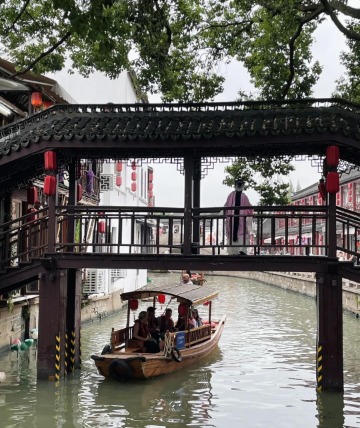
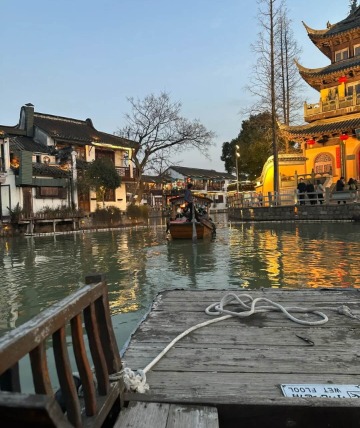
Boat Tours (游船)
A trip to Shanghai Zhujiajiao Town wouldn’t be complete without experiencing a traditional Chinese hand-rowed boat.
- Zhuxi Yuanbao Boat: This is a newly introduced boat tour option, offering packages with Chinese afternoon tea and Zhujiajiao Town’s signature dishes, perfect for visitors who want to enjoy food while taking in the beautiful scenery. The whole tour lasts about 60 minutes. The price is roughly 1288 CNY (about 180 USD) for 5 people, but it can vary depending on the package. Onboard, you’ll find traditional Chinese photo props like oil-paper umbrellas, pipa (Chinese lute), and flutes to make your photos even more special.
- Standard Boat Tours: The price for standard boat tours depends on the number of people and the time of day. Daytime tours are usually around 40 CNY (about 5.5 USD) per person. You can also rent a whole boat for 200 CNY (about 27 USD), which accommodates up to 6 people, with a tour that lasts about 15 minutes.
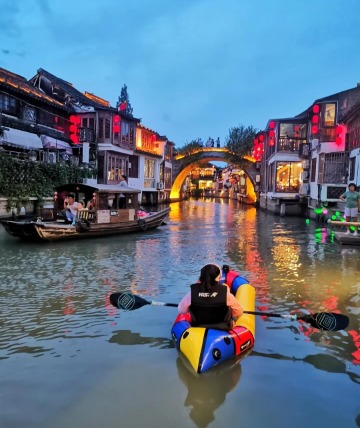
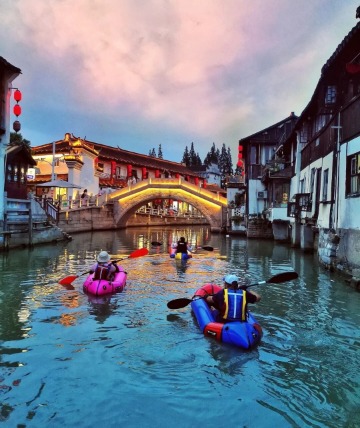
Paddleboarding (划浆板)
Shanghai Zhujiajiao Water Town’s paddleboarding activity starts at Dadian Lake and takes you all the way to the ancient town. Coaches will explain the basics from the shore and help participants get on the board. Once you’re stable, you can start paddling. This activity is suitable for people of all ages, especially children and beginners, offering a fun and safe way to enjoy paddleboarding and improve physical fitness.
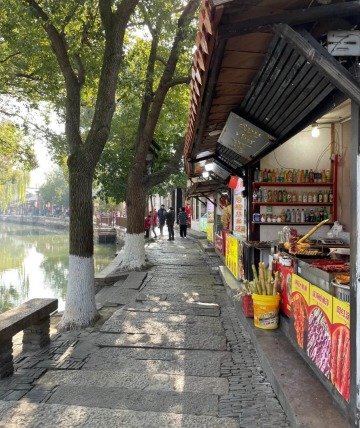
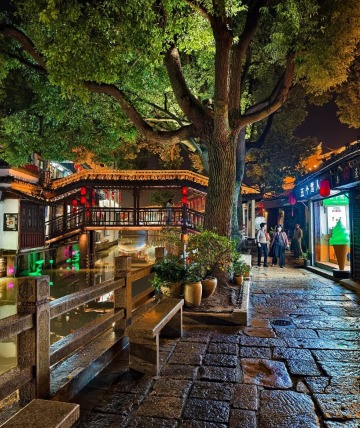
Strolling (漫步)
The charming stone streets and winding alleys of Zhujiajiao Water Village make you feel like you’ve stepped back in time to a thousand-year-old Jiangnan water town in China. As you stroll through the town, you can watch boats drifting by on the river and admire the ancient buildings along the banks. On the main street, you can also join in on traditional craft activities like paper-cutting, weaving, and pottery, immersing yourself in the beauty of Chinese craftsmanship.
Other Famous Ancient Towns in Shanghai
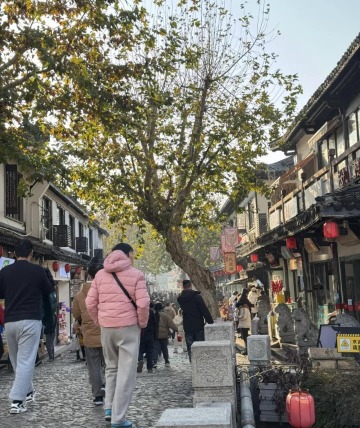

Zhouqiao Old Street (州桥老街)
Zhouqiao Old Street is about 50 kilometers from Shanghai Zhujiajiao Water Town. It was founded during the Southern Song Dynasty, over 800 years ago. Compared to other ancient towns in Shanghai, this one is less commercialized and retains a more traditional, rustic feel.
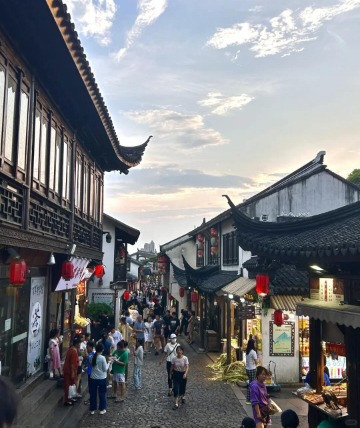
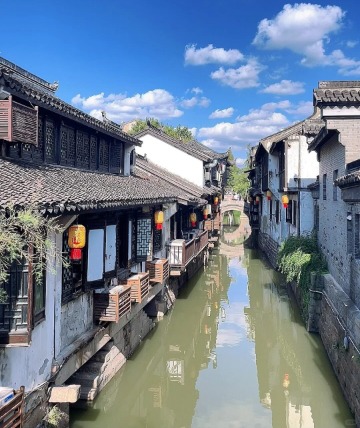
Nanxiang Ancient Town (南翔古镇)
Nanxiang Ancient Town is about 45 kilometers from Zhujiajiao Ancient Town. It dates back to 505 AD, giving it a history of over 1,500 years. The town is home to many historical landmarks, such as Guyi Garden, the Nanxiang Twin Towers, the Nanxiang Temple Brick Tower, and the Zhao Family Residence. Additionally, Nanxiang is famous for its Nanxiang Xiaolongbao, a type of soup dumpling that’s beloved throughout Shanghai. These dumplings are delicate and small, with paper-thin skins wrapped around juicy fillings that steam to perfection, filling the air with an irresistible aroma. It’s definitely a must-try!
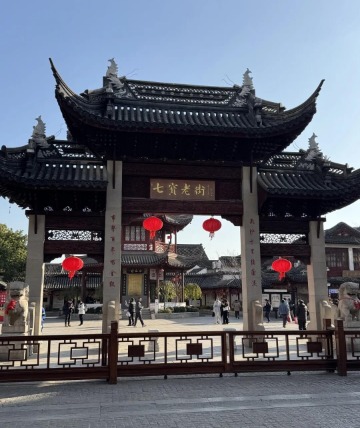
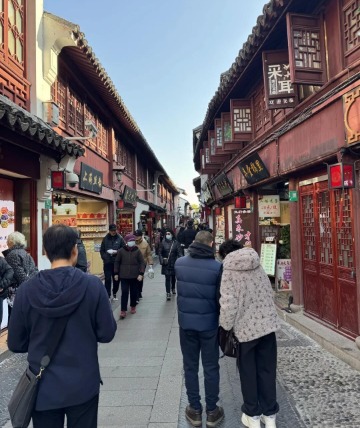
Qibao Old Street (七宝老街)
Qibao Old Street is about 35 kilometers from Zhujiajiao, China. It began to take shape during the Han Dynasty, with a history of over 1,000 years. The buildings lining the streets are mostly from the Ming and Qing Dynasties and are well-preserved, exuding an old-world charm. Many of the doorframes are adorned with exquisite stone and wood carvings, showcasing ancient Chinese architectural artistry. Today, Qibao Old Street is also known locally as Qibao Food Street, where you can enjoy authentic Shanghai snacks like zongzi (rice dumplings), xiaolongbao (soup dumplings), shengjianbao (pan-fried dumplings), and sweet and sour ribs.
FAQs About Ancient Towns in Shanghai
1. What is the best ancient town in Shanghai?
Without a doubt, Zhujiajiao Ancient Town is the best. It’s the largest and most popular ancient town in Shanghai. Its natural landscapes and cultural environment have attracted many Chinese film and TV productions, earning it the nickname “Hollywood of the suburbs of Shanghai.”
How to Get to Shanghai Zhujiajiao Town
Zhujiajiao Water Town is located in the Qingpu District of Shanghai, about 48 kilometers from downtown Shanghai. You can take Shanghai Metro Line 17, which goes directly to Zhujiajiao Station. After exiting from Exit 1, it’s about a 2-kilometer walk along Zhuxi Road to the ancient town.
Alternatively, instead of walking, you can also take a boat from Exit 1 to the town, with a fee of 40 CNY (about 5.5 USD) per person.
Hours & Fees
Hours
Daily from 08:30 to 16:30, open year-round
Best Time to Visit
Half a day to a full day
Fees
Free (However, some attractions within the town, like Kezhiyuan Garden and Hexinyuan Garden, may require an additional ticket)
Practical Tips
Admission to Zhujiajiao Water Town from Shanghai is free, but some attractions, like Kezhiyuan Garden, require a combined ticket. The combined ticket costs 60 CNY (about 8 USD), which includes entry to Kezhiyuan Garden, Hexinyuan Garden, and Helong Art Museum—a 10 CNY (about 1.5 USD) discount compared to buying individual tickets.
It’s recommended to visit Fangsheng Bridge around 3:30 PM for photos, as this is when you can capture the best lighting.
Consider staying overnight in the ancient town and booking a riverside room. The town lights up beautifully at night, and staying in a riverside room will let you fully immerse yourself in the local atmosphere.


